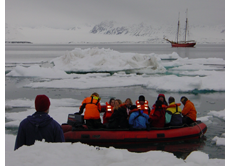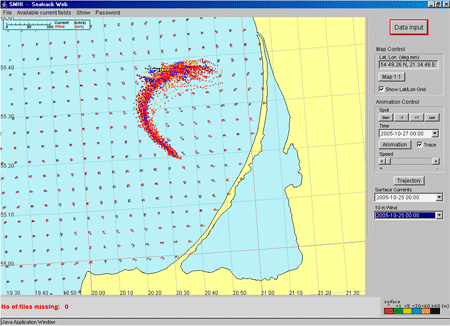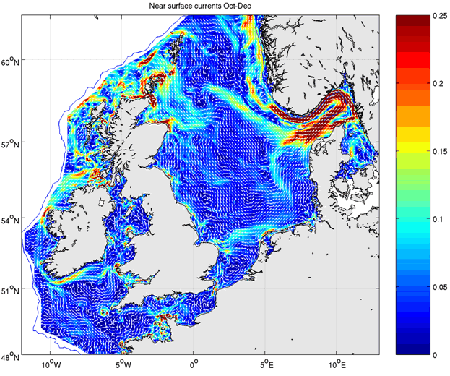1. Understanding and Predicting Ocean Currents
Current variability

When planning a holiday in a foreign country it is useful to know what the climate (the long-term average weather) is like. What you do and how you dress on particular day is more likely to depend on the weather on that day.
It is the same with ocean currents. Knowing the mean flow and main ocean currents is important for understanding ecosystems or the role of the ocean in global climate, but often what is of interest is how the flow varies around these long-term averages, or the strength and direction of the current in a particular place at a particular time.

To make accurate predictions of ocean currents we need data from a range of sources (satellites, ships, buoys, floats), telling us what the state of the ocean is now.
We also need a model of the ocean system, based on our understanding of the different forces that drive and shape the flow of water in the sea. The following chapters deal with these forces in more detail, but here is a brief summary.
Forces that drive the flow of ocean currents
The wind pushes against the sea surface and sets up a current in the down-wind direction, which decreases with depth. These wind driven currents are affected by the earth's rotation and the shape of the ocean basins, and control flow in the top few hundred to a thousand metres of the ocean. They influence regional climate, form the basis for large marine ecosystems and fisheries that depend on them, and are important for ship routing and pollutant transport. They are the subject of chapter 2.
Density differences caused by differences in temperature and salinity drive a vertical circulation that transports heat from the tropics towards the poles. Cold, salty surface water, sinks at high latitudes, and is replaced by warm water from the tropics. This 'global ocean conveyor' also responsible for bringing carbon dioxide from the atmosphere and surface ocean into the deep ocean where it is stored away for hundreds of years. The global conveyor and its role in the Earth's climate is the subject of chapter 3.
Tides generated by the moon and sun drive tidal currents that in some areas can reach several knots. Along coasts and in shallow seas tidal currents are usually the dominant contribution to the flow, so its prediction is important, for example for navigating shipping channels in and out of major ports.
River flow can also have a strong effect on local currents, which can be important for the movement of sediments and pollutants. Rivers also affect coastal habitats nearby, by reducing the salinity of the water, and often more importantly by transporting sediments, plant nutrients and various pollutants from land into the sea. The effect of large rivers such as the Amazon and the Congo can be detected hundreds of kilometer away from the river mouth. Tides and rivers are the subjects of chapter 5.
The currents we measure are the result of interaction between all these forces. They are also influenced by the rotation of the earth, by bathymetry (depth and shape of the sea floor), and the shape of the coasts.
Our ability to make useful predictions depends on understanding how all these factors interact to control the flow of water through the oceans and along our coasts.

Source: A. Kostianoy/MOPED

Source: Proudman Oceanographic Laboratory, Liverpool
- they affect maritime transport, marine industries and leisure activities such as sailing,
- they control the conditions experienced by marine plants and animals, so understanding them is necessary for sustainable management of marine resources,
- they are an important influence on regional climate, and interact with prevailing winds to control temperature and precipitation patterns across the world.
